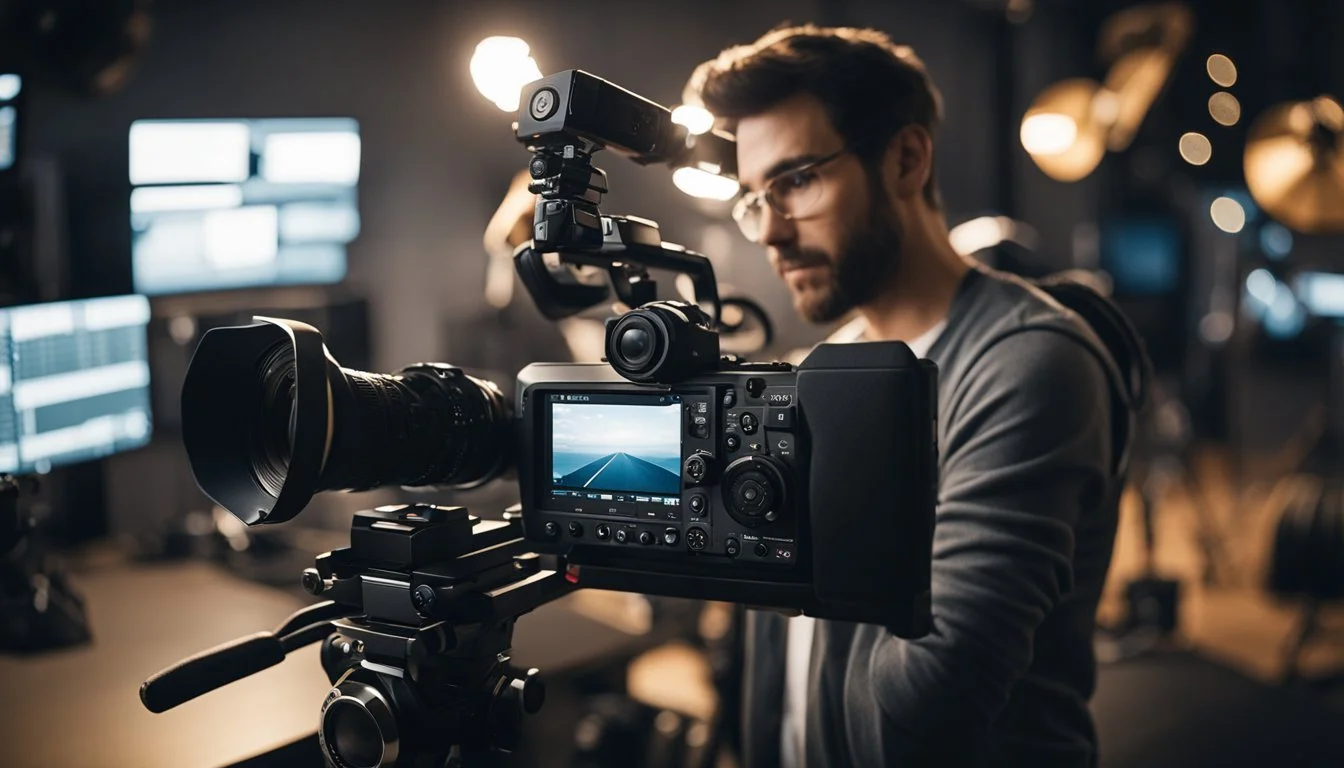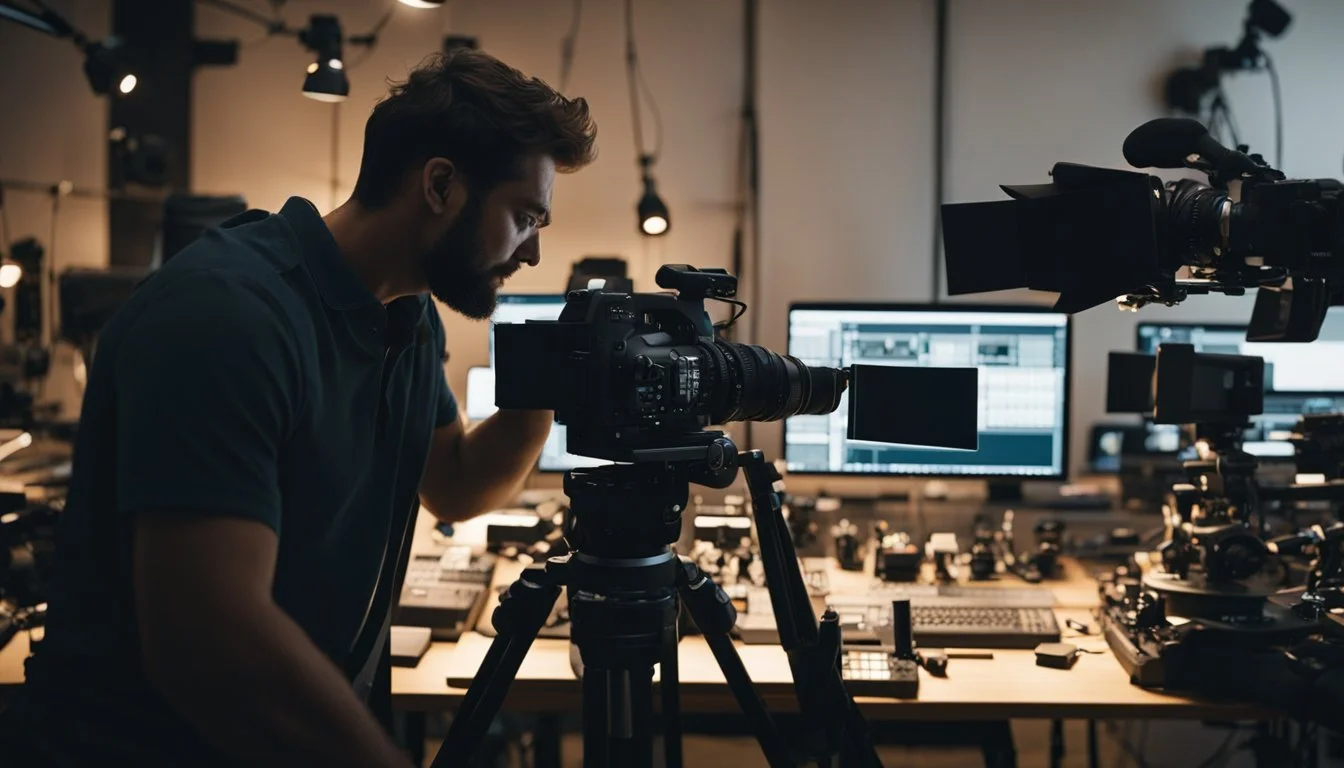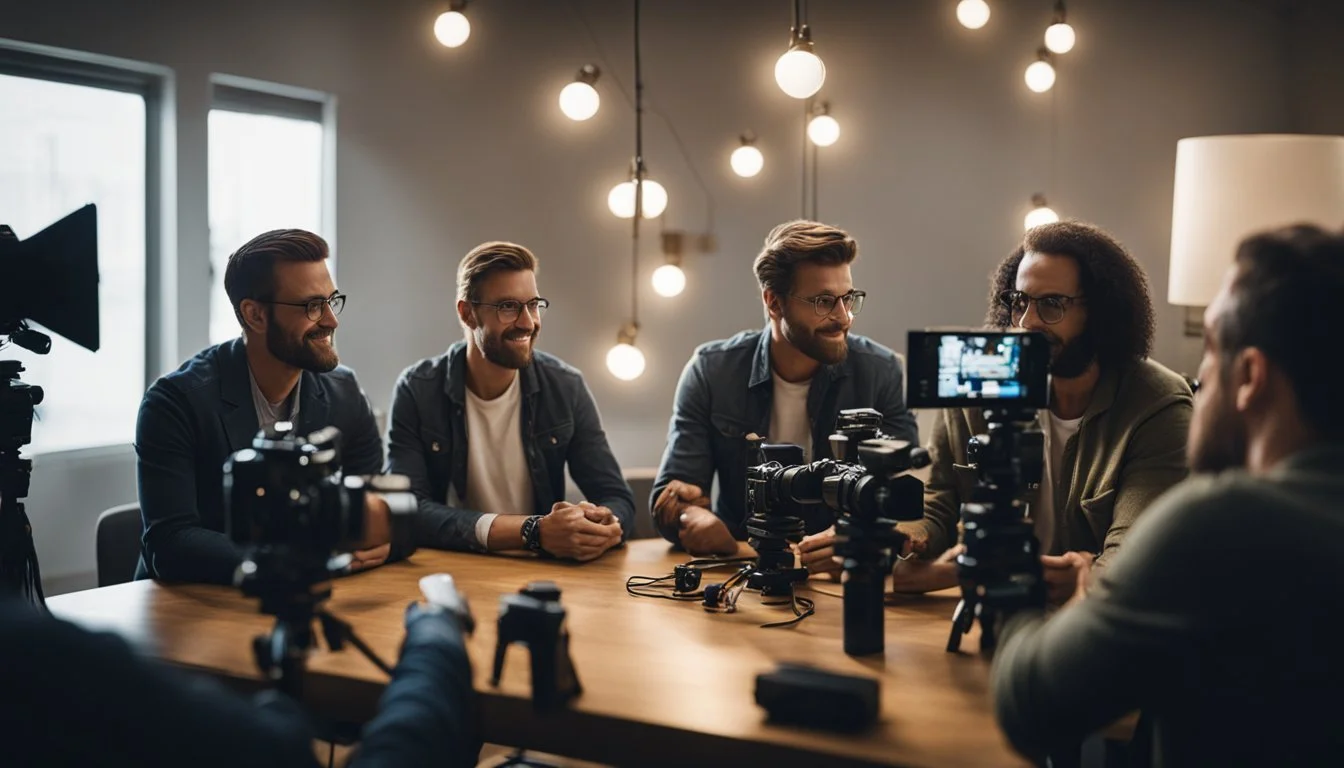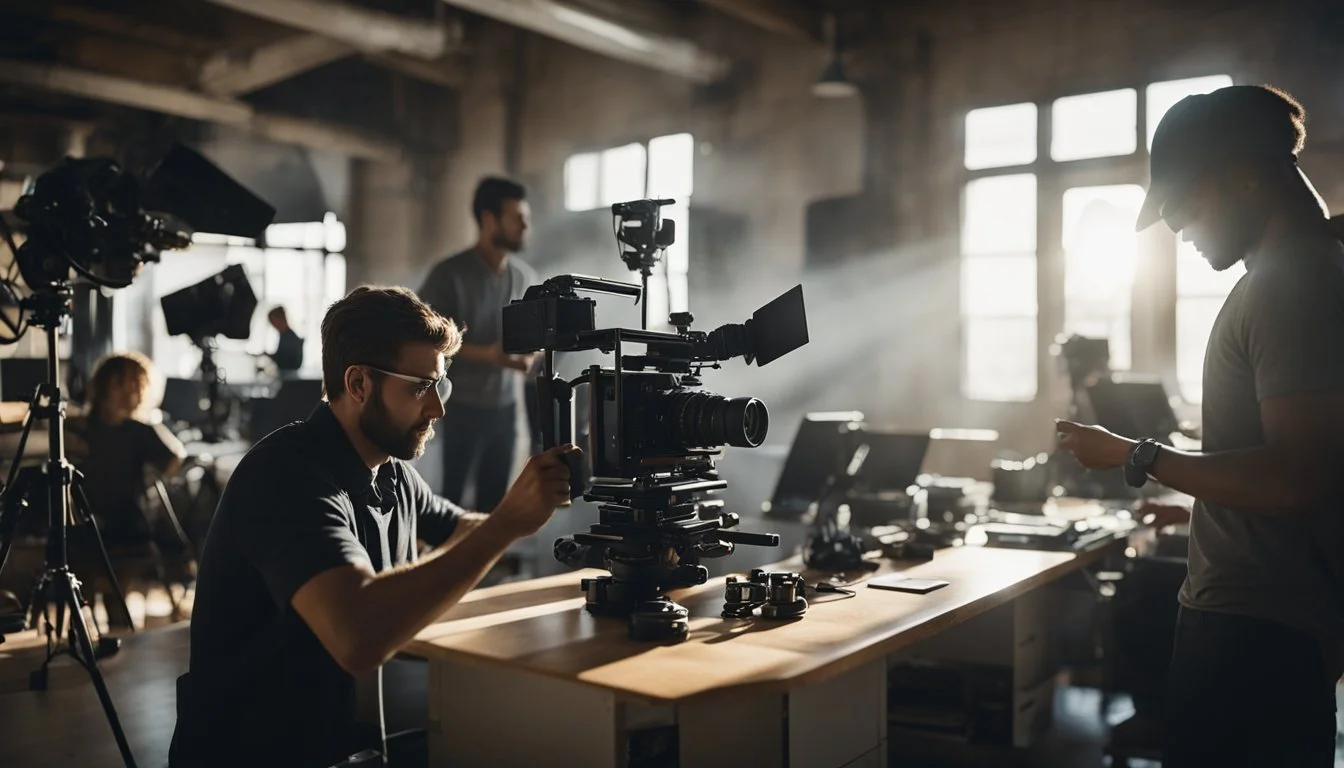Filmmaking Basics: Enhancing Skills with Existing Gear
Embarking on the journey of filmmaking can be both exciting and daunting. Whether you're just starting out or looking to hone your skills, understanding how to maximize the use of the gear you have is crucial. With the right techniques and knowledge, even basic equipment can produce professional-quality results.
Investing in essential tools like a tripod or video stabilizer can drastically improve the stability and clarity of your shots. For those using a DSLR or mirrorless camera, adding a shoulder rig could enhance the smoothness of motion shots, providing a more polished look. Despite budget constraints, the right accessories can elevate the production value of your films.
Equally important is the creative approach to using your gear. Filmmakers should leverage active listening to understand and translate the vision of each project effectively. This fosters collaboration among the cast and crew, ensuring that every scene resonates deeply with its audience. By focusing on these basic principles, filmmakers can significantly improve their skills and the quality of their work.
Understanding the Basics of Cinematography
Mastering cinematography fundamentally enhances the look, feel, and storytelling of a film. Key elements such as composition, lighting, and camera movements are crucial to improving visual storytelling.
Composition and Framing
Composition and framing are vital in directing the viewer’s eye and telling a story within a single shot. Rule of Thirds is a basic yet powerful guideline where the frame is divided into nine equal parts, ensuring the subject of the shot aligns with the intersections or lines.
Leading lines naturally guide the viewer's attention through the frame. Additionally, balancing elements in the frame creates harmony, while intentional imbalance can evoke tension or discomfort. Framing involves deciding what to include or exclude, often setting the mood and context by using different perspectives and depths.
Lighting Techniques
Lighting defines the mood, texture, and depth of a scene. Three-point lighting is a foundational method, consisting of key light, fill light, and backlight. Key light is the primary source of illumination, positioned to create strong shadows.
Fill light softens shadows created by the key light, usually placed opposite. Backlight, located behind the subject, separates them from the background, adding depth.
Natural light, like sunlight, can be harnessed effectively but requires careful control of its intensity and direction. Low-key lighting using fewer light sources, enhances dramatic, moody scenes, while high-key lighting promotes a brighter, more open atmosphere.
Camera Movements and Angles
Camera movements and angles significantly affect the viewer's perception. Pan and tilt movements follow action horizontally and vertically, guiding the audience through the scene. Dolly and tracking shots involve moving the camera towards or alongside the subject, adding dynamic motion.
Angles, such as high-angle shots, look down on subjects to make them appear smaller or weaker. Conversely, low-angle shots looking up convey power and dominance. Using a mix of wide, medium, and close-up shots can emphasize different aspects of a scene, providing a comprehensive visual narrative that maintains viewer interest.
Maximizing Your Current Equipment
Even with limited resources, filmmakers can significantly enhance their production quality. By optimizing camera settings, using lenses effectively, and prioritizing sound recording, you can achieve impressive results.
Camera Settings and Features
Understanding and adjusting camera settings is crucial. Pay attention to ISO, aperture, and shutter speed.
ISO: Lower ISO settings produce cleaner images with less noise.
Aperture: Wider apertures (low f-stop numbers) let in more light and create a shallow depth of field, useful for artistic effects.
Shutter Speed: Faster shutter speeds capture fast motion more clearly, while slower speeds can introduce motion blur for dynamic scenes.
Modern cameras also offer manual focus and custom white balance, allowing for greater control over your shots.
Utilizing Lenses Effectively
Lenses dramatically influence the quality and feel of your footage. A prime lens, with a fixed focal length, typically offers sharper images and wider apertures, making it ideal for low-light conditions.
Wide-Angle Lenses: Best for landscapes and establishing shots.
Telephoto Lenses: Perfect for capturing distant subjects and achieving a compressed background effect.
Macro Lenses: Ideal for extreme close-ups, bringing out fine details.
Using lens hoods can reduce glare, and polarizing filters help manage reflections and enhance sky contrast.
Sound Recording Essentials
High-quality audio is just as critical as visual elements. An external microphone vastly improves sound capture compared to built-in camera microphones.
Shotgun Microphones: Mounted on the camera, these are focused and great for capturing dialogue and specific sounds.
Lavalier Microphones: Small and clipped to clothing, ideal for interviews and dialogue.
Employ windscreens to reduce wind noise and audio recorders to capture sound separately for higher quality. Always monitor audio levels and use headphones during recording to ensure clear sound.
Post-Production Strategies
Effective post-production can transform raw footage into a polished final product. Key strategies in post-production include precise editing, meticulous color correction, and comprehensive sound design.
Editing for Impact
Editing is one of the most crucial stages in post-production. The goal is to assemble the raw footage in a way that tells a coherent and compelling story. Editors should focus on pacing, ensuring each scene transitions smoothly to maintain audience engagement.
Using tools like Adobe Premiere Pro or Final Cut Pro, filmmakers can cut and arrange clips, add transitions, and apply special effects. For optimal results, editors should prioritize consistency, maintaining the visual and narrative flow throughout the film.
Color Correction and Grading
Color correction and grading are fundamental in creating a visually cohesive film. Color correction involves adjusting the footage to achieve a natural and uniform look, while color grading adds the stylized tones that set the film's mood and atmosphere.
Filmmakers use software like DaVinci Resolve to fine-tune colors, contrasts, and brightness. Balancing colors ensures scenes match aesthetically, whereas grading can evoke specific emotions or highlight particular themes. These adjustments are essential to maintain the cinematic quality of the final product.
Sound Design
Sound design enhances the auditory experience of a film, making it more immersive. It includes dialogue editing, adding sound effects, and designing background scores.
Effective sound design involves synchronizing audio with visuals, ensuring clarity in dialogue, and adding ambience that complements the on-screen actions. Programs like Pro Tools and Adobe Audition aid in mixing and mastering audio tracks. A well-designed soundscape helps in emotionally engaging the audience, contributing profoundly to the storytelling process.
Crafting a Narrative
A strong narrative is the backbone of any documentary. Effective scriptwriting and thoughtful character development are crucial for creating a compelling story that resonates with the audience.
Scriptwriting and Storytelling
Scriptwriting begins with extensive research to gather facts and viewpoints. Documentaries often employ a three-act structure to maintain clarity and engagement. The first act sets the stage, introducing the main topic and key characters. The second act delves into the core of the story, presenting conflicts and challenges. The third act resolves these issues, providing a conclusion.
This structure helps in organizing real-life events into a coherent narrative. To avoid bias, it’s important to present multiple perspectives. Interviews, archival footage, and voiceovers can enrich the narrative, making it multifaceted and dynamic.
Character Development
Characters are the heart of the documentary. They should not only be visually captivating but also complex and relatable. Profiling key individuals through in-depth interviews can reveal personal stories and emotions. This adds depth and authenticity to the film.
Character arcs are essential, showing growth or change throughout the documentary. This transformation makes the narrative more engaging. Additionally, juxtaposing different characters’ viewpoints can provide a richer, more balanced story.
Collaboration and Networking
Collaboration and networking are crucial aspects of filmmaking. They involve effective teamwork with cast and crew and building valuable industry connections that can advance your career.
Working with Cast and Crew
Effective collaboration with cast and crew ensures a smooth and successful production process. Clear communication and mutual respect are key. Directors should provide concise directions, while crew members should be responsive and proactive.
Teamwork Strategies:
Hold regular meetings to discuss goals and progress.
Encourage feedback to foster a creative environment.
Assign specific roles to prevent overlap and confusion.
Conflict Resolution:
Address issues promptly to avoid escalation.
Keep discussions professional and solution-focused.
Maintain a positive attitude to keep morale high.
Building Industry Connections
Networking in the film industry opens doors to new opportunities and collaborations. Attending film festivals, events, and networking mixers can introduce you to potential collaborators and mentors.
Networking Tips:
Prepare business cards and a portfolio to share.
Follow up with contacts made during events.
Engage in online communities and forums.
Sustaining Relationships:
Stay in touch through regular communication.
Offer assistance and support to industry peers.
Attend industry events consistently to maintain visibility.
Cultivating a Unique Style
Developing a distinctive style in filmmaking involves honing both visual and audio elements. These components create a recognizable signature that sets a filmmaker apart.
Developing a Visual Signature
A filmmaker's visual style can be defined by choices in color palette, camera angles, and shot composition. Experimenting with different lighting techniques and lenses can add depth.
Color Palette: Consistency in color choice can evoke specific emotions. For example, warm tones suggest intimacy, while cool tones produce a detached feel.
Camera Angles: Unique angles can tell a story from a distinct perspective. High-angle shots can make subjects appear vulnerable, while low-angle shots convey power.
Shot Composition: Rule of thirds and leading lines guide viewers' attention to key elements. Using symmetry can create a striking visual impact.
Creating an Audio Identity
Sound design is crucial in filmmaking. Quality audio can elevate a film, while poor sound can detract from the experience.
Music Choice: Selecting music that complements the visual tone can enhance the narrative. Original scores provide a unique touch.
Sound Effects: Effects that align with on-screen actions add realism. Ambient sounds establish setting and mood.
Dialogue Clarity: Ensuring clear dialogue is essential. Investing in good microphones and paying attention to sound editing can make a significant difference.
Leveraging Feedback and Critique
Effective feedback drives growth in filmmaking skills. Utilizing screening sessions and incorporating constructive criticism can enhance one's work significantly.
Screening and Test Audiences
Conducting screenings for test audiences can provide invaluable insight. By observing genuine reactions, filmmakers can gauge the effectiveness of their storytelling, pacing, and emotional impact.
Invite a diverse group to catch a variety of perspectives. Encourage viewers to be candid about what worked and what didn't.
Consider setting up feedback forms with specific questions covering elements such as narrative clarity, character development, and visual composition. This structured approach helps in pinpointing particular areas of improvement, making revisions more targeted and efficient.
Incorporating Constructive Criticism
Embracing constructive criticism is essential for growth. Critique should be seen as a tool for refinement rather than a personal attack.
When receiving feedback, it's crucial to stay open-minded and focus on the merits of the criticism rather than the delivery. Identify recurring comments as these often highlight critical areas needing attention.
Use a feedback journal to track suggestions and responses, which can streamline the revision process. Prioritize implementing changes that align with the film's vision while enhancing its overall quality.
By systematically applying constructive feedback, filmmakers can continually improve their craft and produce more compelling and polished films.
Staying Current and Continued Learning
In the dynamic field of filmmaking, staying updated with the latest trends and continuously learning new skills are vital for professional growth. This involves following industry advancements and participating in educational opportunities like workshops and seminars.
Keeping up with Industry Trends
To remain relevant, filmmakers should actively follow current industry trends. Subscribing to industry publications and following influential filmmakers on social media can provide insights into modern techniques and tools. Attending film festivals and watching recent films can also reveal emerging styles and technologies.
Utilizing online platforms such as blogs and forums can help in discussing recent developments with peers. Staying informed ensures that filmmakers are aware of new opportunities and can adapt their techniques accordingly.
Attending Workshops and Seminars
Workshops and seminars offer practical, hands-on experience and networking opportunities with industry professionals. These events cover a wide range of topics from technical skills to creative processes, providing a well-rounded educational experience. Participating in these programs helps filmmakers understand current standards and practices.
Many workshops are available both in-person and online, offering flexibility in learning. Engaging with mentors and peers during these sessions can provide valuable feedback and fresh perspectives, fostering continued growth in one's craft.








